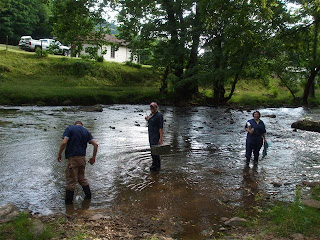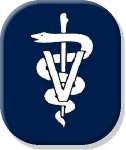 Hello once again from the land of veterinary medicine. When I last left off, I detailed my entrance into the infamous block of bad news and promised to tell of my most challenging case yet. Towards the end of the first week in the rotation, I was informed that an emergency case was on its way and that I was selected to take the case (every other service in the hospital lets students decide which cases they want). Being but a newbie student and new to the profession, I like to see what cases I have coming in advance so that I have ample time to prepare. All that I knew about the incoming case was that it was a dog that couldn't breathe.
Hello once again from the land of veterinary medicine. When I last left off, I detailed my entrance into the infamous block of bad news and promised to tell of my most challenging case yet. Towards the end of the first week in the rotation, I was informed that an emergency case was on its way and that I was selected to take the case (every other service in the hospital lets students decide which cases they want). Being but a newbie student and new to the profession, I like to see what cases I have coming in advance so that I have ample time to prepare. All that I knew about the incoming case was that it was a dog that couldn't breathe.When the patient arrived, the technician said, "Your patient has arrived, but she went directly to the intensive care unit because it apparently had a seizure while on the way here." Oh goodie.... The doctor and I went and took a look at the dog and found that it was panting heavily, but still had a normal pink color and was otherwise ok. The dog was placed in an oxygen cage, but trouble would arise whenever we took the dog out of the cage to examine it. We couldn't do much without causing the dog to squirm and struggle because of it's personality. When this occurred, the dog would close its mouth and shortly thereafter tilt its head back, feint, and turn blue. We would immediately treat the dog with oxygen therapy and it would recover, but we used this opportunity to realize that there was no air passing through either nasal passages. Thankfully, our evaluation of the lungs found them to be normal. Because the dog had no prior history of neurologic disease, we quickly deduced that the "seizure" that the clients claimed had occurred was likely one of these feinting episodes.
After our initial evaluation of the dog, we went and spoke to the owners about what we found and the dog's prognosis. The dog was a miniature poodle and a really cool dog overall. She also had a really cute name which I wish I could say, but I need to maintain confidentiality. The dog was only 7 years old and the owners were really attached to it, so they said to do whatever was needed to help her out. Rule-outs for such a condition include and abscess at the root of a tooth that has swollen terribly, a foreign body (dogs get the craziest things up there nose), a reaction to some foreign substance, and sadly...neoplasia. The latter is the official term for a tumor and I try my very best to avoid using the dreaded "C-word" around clients because even the slightest mention of that word strikes dread in their hearts, even when the possibility is unlikely and your only mentioning it to cover your ground. We explained to the owners that she would have to stay in the hospital for likely an extended period and would require intense and detailed diagnostics to figure out what was going on with their pet.
With the official go-ahead from the owners, we admitted the patient and went forth with her work-up. We initially placed her on an antibiotic and a steroid in the hopes of removing any secondary infection and to reduce any swelling occuring in her nasal cavities. This poor dog had to endure through bloodwork, x-rays, a CT scan (aka a CAT scan), two rhinoscopies (where a camera is placed into the nasal cavities) with biopsies taken, and surgical entrance through the roof of the mouth into the nasal cavities to the area where the camera can't reach. Thankfully, all of those diagnostics showed how there was not a tooth-root abscess or foreign body. The most frustrating aspect of the diagnostics were that the biopsy samples both came back as "inflammation". That answer can be a double-edged sword however because while it means there was no tumor tissue in the samples, tumors can still have an inflammatory coating around them (i.e. we missed).
Two weeks of hospitalization and diagnostics later, the patient gradually improved in her condition and began breathing air out of her nostrils. While I was very happy that the dog improved, a few thousand dollars were spent on this dog only to fix it with monitoring, antibiotics, and steroids. I personally have never been a big fan of the so-called "foo-foo" dogs, but this lil' poodle really grew on me and won a place in my heart. I'm a relatively tall and stocky guy, and many of my classmates and doctors who saw me taking care of her and walking her made many "Aww, how cute..." and "You're the perfect match" comments that would make me sick :). In addition, because of how long she was hospitalized, she became a local celebrity who saddened everyone when she left.
As frustrating as this case was, I am very glad it had a happy ending. What caused the airway obstruction, you ask? I have no f***ing idea and it irks me to this day. The client owned a hair salon and would allow the dog to walk around and mingle with her customers, so our hypothesis was that the dog was reacting to the hairsprays and other chemicals. I hope you enjoyed the story, and be sure to tune-in for my next post which will be about the end of my internal medicine rotation where I had a wave of kitty-cases....some of which had yellow skin!
**The above image is from "Care Beyond Cure: Diagnostic Secrets and the Cancer Patient for 2005!" and can be found here






















